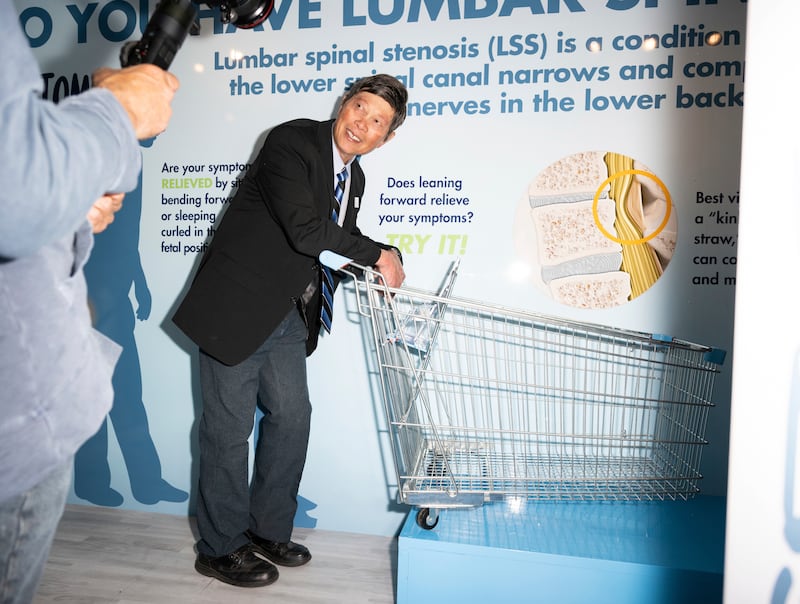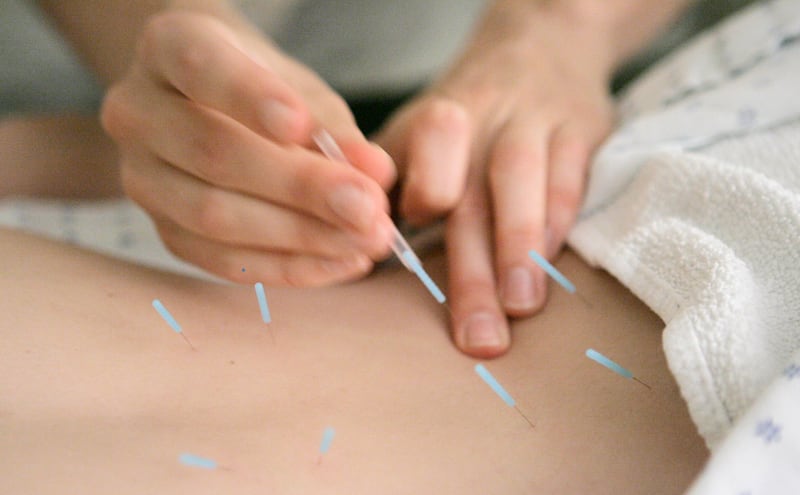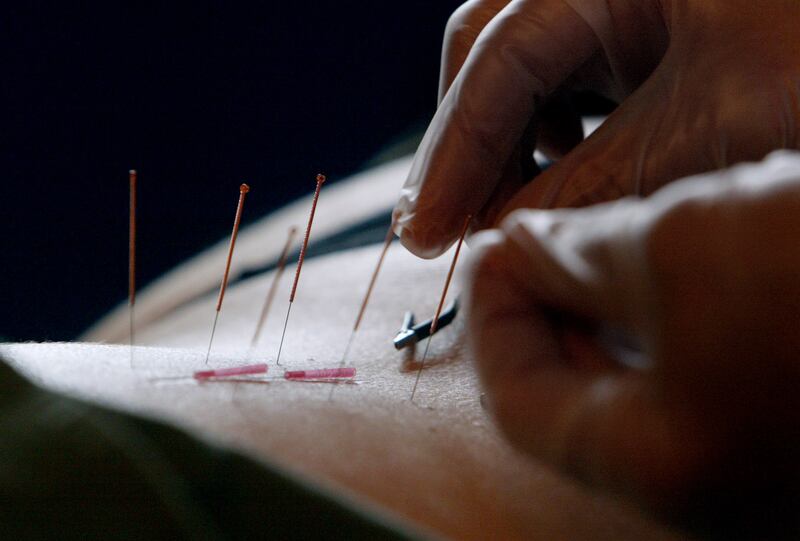- A third of U.S. adults have some degree of low back pain.
- A study funded by the National Institutes of Health finds those who are given acupuncture benefit.
- The benefit, while modest, was sustained for a number of months.
About a third of U.S. older adults have chronic low back pain and it’s the leading cause of disability worldwide. A new study funded by the National Institutes of Health finds acupuncture provided greater improvement in pain reduction and function than usual medical care, medications that are often prescribed or physical therapy.
The institute reported an “urgent need for safe, effective and non-addictive pain management.”
“Of the different treatments we have for chronic low back pain, most have a somewhat modest effect,” said lead author Lynn L. DeBar, Ph.D., Kaiser Permanente distinguished investigator, in a press release. “Our clinical results suggest that acupuncture is working as well as many things that are more familiar to people. We found that the size of this effect, while modest, was positive and sustained.”
The BackInAction clinical trial included 800 participants who self-reported their pain-related disability after treatment that included or omitted acupuncture. The researchers looked at whether manual acupuncture needling, which Medicare does cover, helped pain control and function for those older adults with persistent low back pain.
The results were published in JAMA Network Open.

The institute notes that acupuncture has gained popularity since the 1970s in the U.S. The technique for low back pain “entails inserting fine needles into the skin at points that follow a prescribed anatomical grid. The practice provides various benefits, including reduced discomfort from back, joint or neck pain.”
The researchers added that “while acupuncture has been found to be safe and effective for chronic low back pain in adults overall, few acupuncture studies have focused on adults 65 years of age and older.”
Assessing pain at different points
Study participants had experienced low back pain for at least three months and all of them had insurance of some type. They were not restricted from other medical care. A third of them received three months of acupuncture (15 treatments), and another third received six additional treatments after that over the next three months, billed as “maintenance sessions.”
The participants completed assessments at the three-month, six-month and one-year milestones, based on 24 statements describing everyday activities affected by low back pain in terms of pain and physical limitations. Other tools added to pain level, function, depression and anxiety assessments.
Those who received acupuncture were doing better in terms of pain at both the six-month and one-year assessments, compared to those with medical treatment alone. They also had lower pain intensity and greater physical function after six months. At both six months and one year, those who had acupuncture treatments had fewer symptoms of anxiety than those who only received medical care.
“We saw very little in the way of adverse effects during the clinical trial,” said co-lead researcher Andrea J. Cook, Ph.D., Kaiser Permanente senior biostatistics investigator. “Older adults often are dealing with other medical problems in addition to back pain. Acupuncture offers a less invasive option that has a better safety profile than a lot of the common treatments for back pain in older adults.”



